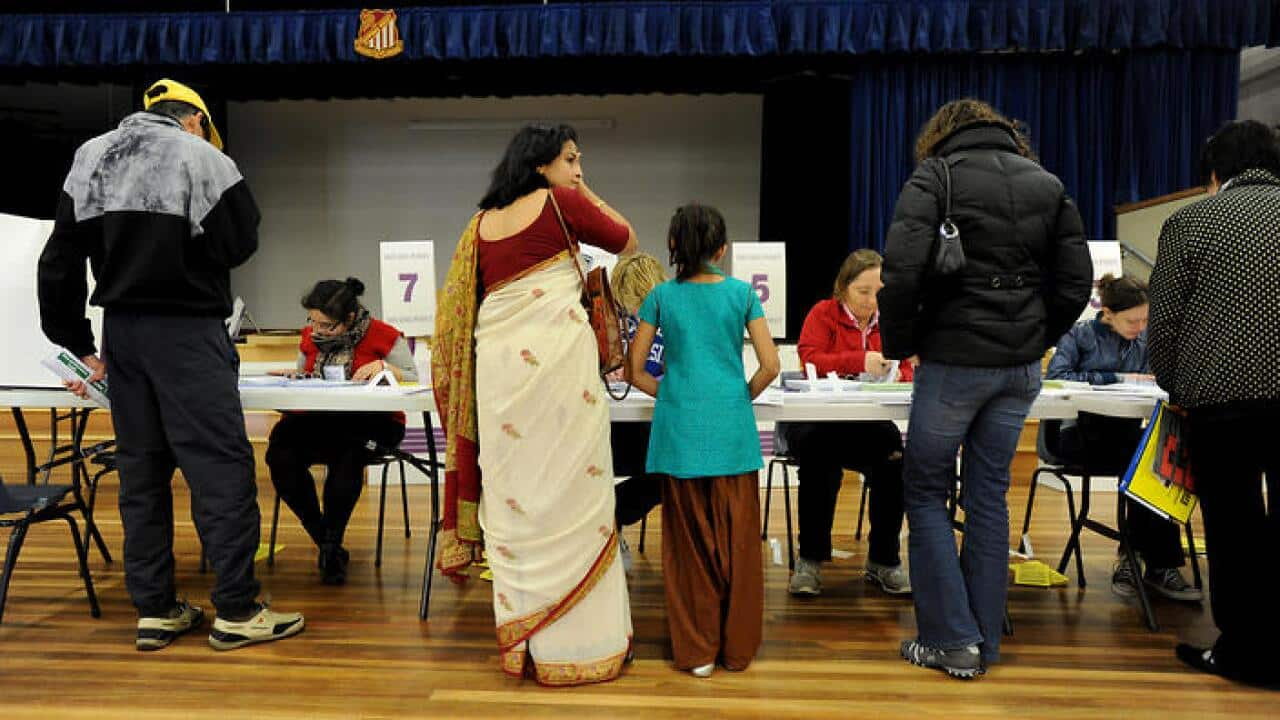For the Indian migrant community in Australia, the first quarter and a bit of 2019 has been infested with ‘election’ fervour. It’s not often that the national elections for both India and Australia coincide. This year though, citizens for both these countries are going to polls in May to elect their respective national governments.
An election in Australia may seem to bear no resemblance with the way the elections in India will be carried out (and justifiably so). India is the largest democracy in the world, and just the sheer number of voters eligible to cast a vote means that the polls are conducted over a matter of weeks. Contrastingly, in Australia, it is will be all done and dusted from dawn to dusk on an otherwise uneventful Saturday (18 May 2019).
If you were to delve a bit deeper, though, the social, and economic issues at play for the citizens of both nations are not that far-fetched (if one was to cast aside the obvious differences between the two economies).

A polling officer marks the finger of Indian lambadi tribeswomen at a polling station at Pedda Shapur on the outskirts of Hyderabad April 11 2019. Source: Getty
Religious affiliations have long played a pivotal (and often an ugly) part in determining the fate of elections in India. The 2019 edition has been no different. In recent times, Australia has been grappling with an undertone of racial and communal tensions which are now undeniably a factor that Australians may take to the polling booths when they cast their vote – although they will not manifest into an election exercise as overtly, and as distastefully as they do in India.
The most glaring parallel though, between the Indian and the Australian election of 2019, has to be the exponentially depleting merit of the broader political class in both these countries respectively. There is a screaming dearth of “leaders” and “statesmen” amongst the political fraternities in both countries, making it ever so harder for the public to choose a government.
Australia has not had a Prime Minister that has lasted the full three-year term, in almost a decade. So as Australians go and vote on 18 May 2019, they are bound to be sceptical about the durability of the next head of the nation they will elect. There is not much that separates the two main political parties in Australia. Anyone who ends up forming the next federal government in Australia may not do so with an overwhelming majority.

Saturday marks D-day for Bill Shorten and Scott Morrison after a tough election campaign. (AAP) Source: AAP

Source: AAP
Rahul Gandhi, who heads the Congress Party (the main opposition party), is busying trying to reinvent himself as a political leader but remains gloriously unpopular thereby incapable of leap-frogging the Congress party to an election win. Several regional fronts are furiously engaged in forging alliances to edge out the ruling BJP in their respective regions but none is prominent enough to be an alternative on their own.
So, as Indians and Australians go to elections in May 2019, they will not have a sparkling list of candidates to choose from. Yet, these are the very junctures where democracies prevail and thrive. The citizens in both these wonderful nations will cast their opinions, and let’s hope they do so with the clarity to weed out the underperformers, the hate mongers, the mavericks, and the undeserving.
India, and Australia - it’s time for redemption. Sanam Sharma is a human resources professional, and a regular contributor to SBS Punjabi. He is a published author, columnist, and blogger, who also regularly writes flash fiction and poetry for his blog "Small town boy".
Sanam Sharma is a human resources professional, and a regular contributor to SBS Punjabi. He is a published author, columnist, and blogger, who also regularly writes flash fiction and poetry for his blog "Small town boy".

Disclaimer: The opinions expressed in this article are the personal opinions of the author. The facts and opinions appearing in the article do not reflect the views of SBS Punjabi.
